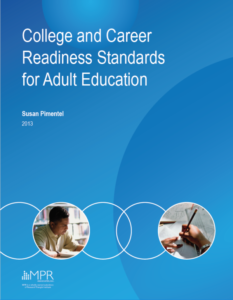Numeracy Resources
Language of Math
Common Core Sheets
Find hundreds of ready-to-use math worksheets on this website. The worksheets can be searched by grade level, math skill, and type of problem. Math tests and flashcards can also be created.
Content Area Vocabulary
The authors suggest a set of questions to guide teachers decisions about what vocabulary to teach. They also suggest some effective strategies for vocabulary acquisition and integrating language and math.
Elementary Always, Sometimes, Never
In Always, Sometimes or Never, students identify whether a mathematical statement is always true, sometimes true, or never true. This link offers statements appropriate for students in early math levels, but it can be adapted to any level or content by changing the mathematical statement students are working with.
ELL Math
This teacher, who teaches a math class for students who speak very limited English and a variety of primary languages, writes about strategies he is using "so students with a strong mathematical background in their own country can advance while the students with a weak background can get feedback and work on the problems they need."
Fraction Misconceptions – from Recovering Traditionalist blog
How does the language that teachers use to describe fractions affect students' understanding of fractions? In addition to exploring this question, the writer suggests some strategies for building number sense around fractions, as well as making sense of a Common Core/CCRS standard about fractions.
Getting Started with Effective Math Talk in the Classroom
Using mathematical discussions in the classroom is a powerful way to increase our students’ critical thinking and communication skills. This article explores ways to get your students thinking and communicating mathematically from the very first days of school. The article is written for K-12 teachers, but the language and strategies work well with adult learners.
Language of Mathematics
The target audience for the Math Materials are beginning level ABE to Intermediate level ABE students, especially non-native speakers. There multi-lingual glossaries to help students learn the vocabulary associated with basic math, fractions and percents, basic algebra and geometry. Teachers can print out a glossary for a student to use, or link these resources to a classroom website. In addition, there are math chants and math games provided to practice math vocabulary.
Numeracy Units: Beginning Level
The Hubbs Center has created a series of Beginning Level Numeracy Units based on real-life applications such as consumerism, temperature, time, health, and work. Find lessons and handouts (in Dropbox folders) under the Numeracy Units link on the main webpage.
The Problem with Math is English
Molina explores the relationship between mathematical instruction and language. "The Problem with Math Is English explains how language-focused conceptual instruction leads students to a deeper understanding than traditional procedural-based teaching methods."
The Story of Two Words and One Simple Tweak to Get Students Talking
Teacher Sarah Van Der Werf shares some observations about attending to vocabulary in math instruction and shares a strategy for helping students access unfamiliar vocabulary in math class.
Translating Word Problems: Keywords
This article offers recommendations for how students should approach word problems, as well as a list of mathematical terms that indicate specific operations.
College & Career Readiness (CCR) Math Standards
 Looking for more specific information about the College & Career Readiness (CCR) Math Standards? Check out the CCRS Math Resources section of the CCR Standards resource library!
Looking for more specific information about the College & Career Readiness (CCR) Math Standards? Check out the CCRS Math Resources section of the CCR Standards resource library!